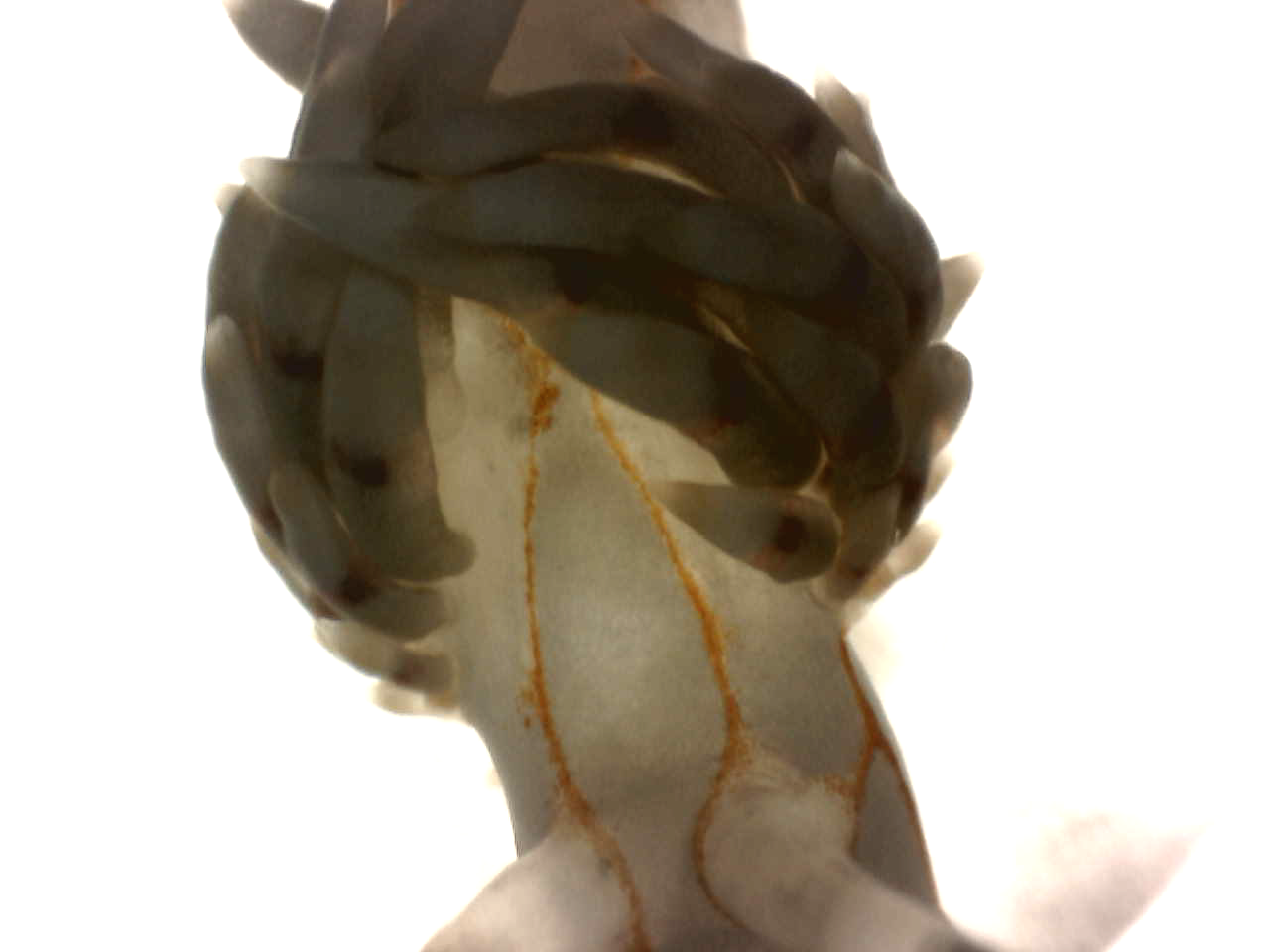Feeding & Respiration
All nudibranchs feed by way of a radula- a flexible, tongue-like mouthpart with rows of microscopic back pointing teeth located in the mouth (Behrens, 2005). The radula is manipulated with a series of extendable protractor muscles to act like a rasp; scraping across the substrate tearing off particles of algae or sponge. The food particles are moved by conveyer belt action back to the esophagus where it is ground into a soupy consistency for digestion (Rudman, 2000). The structure and organization of the radula’s teeth change between groups, depending on the diet of the nudibranch.
Hydroids, such as Tubularia are the preferred prey item of most Aeolids (Behrens, 2005). These are primarily small branching hydroids that provide a lot of biomass for the nudibranchs, who often pick a single feeding site and stay there for the remainder of their lifespan (Behrens, 2005).
Godiva is composed of more mobile species that actively search out these hydroid colonies with the use of their chemosensory organs, the rhinophore. This is a highly specialized sensory organ used to sense the chemical signals in the water column around them (Rudman, 2000). They use these rhinophores to hone in on the signals of their prey while their oral tentacles feel out the surrounding. The rhinophores of godiva are specialized with additional wrinkles at the distal ends to increase surface area for chemical interaction (Behrens, 2005).
 Figure 3. Rhinophores of Godiva specimen with characteristic ridges Figure 3. Rhinophores of Godiva specimen with characteristic ridges |
Excretion
Nudibranch’s expel waste through the anus, located two-thirds of the way down the right side of the body. Digestion occurs in the stomach and intestines using a series of digestive glands to secrete acids, dissolving the hydroid tissue. Waste products are expelled from the anal pore on the right lateral side of the animal (Behrens, 2005).
Respiration
All nudibranchs exchange gas directly though the tissue of external respiratory structures called “naked gills” (Behrens, 2005). Each subgroup of nudibranchs has evolved their own way of using these structures for acquiring oxygen. Aeolids use unique cigar or finger-shaped body extensions called cerata (Rudman, 2000). These cerata, singular form ceras, are thin walled, elongated sacs that provide a direct route for blood to absorb oxygen from the surrounding seawater (Rudman, 2000). Cerata are a defining characteristic of the suborder and are often quite colorful.

|
| Figure 4. Dorsal cerata complete with cnidosac tips and naked gill tissue |
|